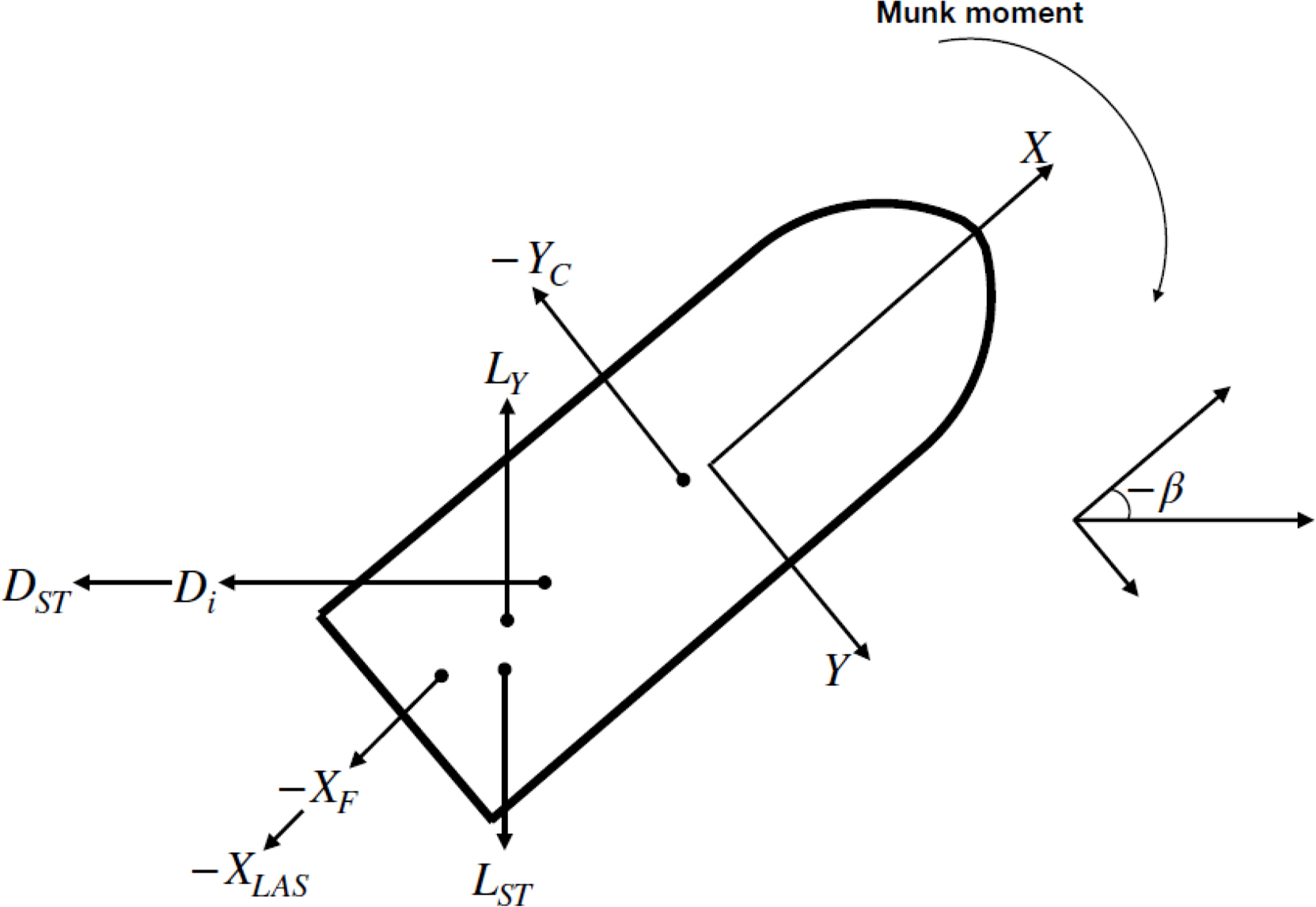Bohlmann, H. (1990). Berechnung hydrodynamischer Koeffizienten von Ubooten zur Vorhersage des Bewegungsverhaltens. Technische Universität Hamburg-Harburg.
Feldman, J. (1979). Revised standard submarine equations of motion (DTNSRDC/SPD-0393-09). David W. Taylor /naval Ship Research and Development Center.
Gertler, M., & Hagen, G. (1967). Standard equations of motion for submarine simulation. (NSRDC Report 2510).
Karasuno, K., Matsuno, T. I., & Igarashi, K. (1991). The mathematical model of hydrodynamic forces acting on ship moving in an oblique direction with fluid-dynamic concepts (2nd report). Journal of the Kansai Society of naval architectures, Japan, 216, 175-183.
Karasuno, K., Matsuno, T. I., & Igarashi, K. (1992). A new mathematical model of hydrodynamic forces and moment acting on a hull during maneuvering motion that occurs under conditions of slow speed and large turns (2nd report). Journal of the Kansai Society of naval architects, Japan, 217, 125-135.
Kim, Y., Kim, D., Yun, K., Lee, Y., Jeong, S., & Lee, G. (2021). Prediction of maneuverability of submarine by captive model test. Proceedings of the Annual Autumn Conference of the Society of Naval Architects of Korea.
Park, J., Kim, N., & Shin, Y. (2017). Experimental study on hydrodynamic coefficients for high-incidence-angle maneuver of a submarine.
International Journal of Naval Architecture and Ocean Engineering,
9, 100-113.

Shin, Y., & Lee, S. (2005). A study on the modeling of hydrohynamic coefficient for the emergency maneuver simulation of underwater vehicle. Journal of Society of Naval Architect of Korea, 42(6), 601-607.
Sohn, K., Lee, S., & Ha, S. (2006). Mathematical model for dynamics of manta-type unmanned undersea vehicle with six degree of freedom and characteristics of manoeuvrability response. Journal of Society of Naval Architect of Korea, 43(4), 399-413.
Watt, G. D. (2007). Modelling and simulating unsteady six degrees-of-freedom submarine rising maneuvers. (Technical Report DRDC Atlantic TR 2007–008) Defence R & D Canada – Atlantic.














